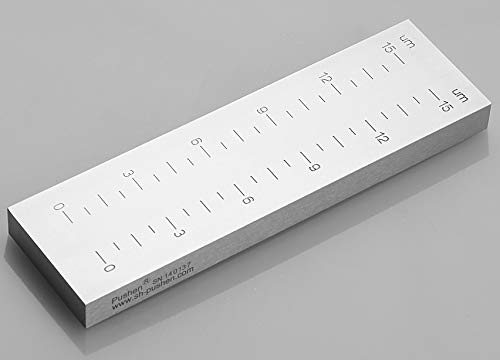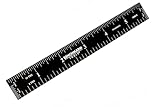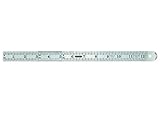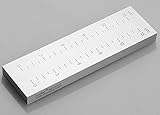All Categories






Fineness Gauge Grindometer Fineness of Grind ISO Standard Single Channel (PS2411)
Share Tweet








Fineness Gauge Grindometer Fineness of Grind ISO Features
-
Many types of solid materials must be ground or milled into finer particles for dispersion in appropriate liquid vehicles. The physical properties of the resulting dispersions, often called “grinds”, depend not only on the actual size of the individual particles, but also on the degree to which they are dispersed. The Fineness Gauges are used to indicate the fineness of grind or the presence of coarse particles or agglomerates in a dispersion. It does not determine particle size or part
-
Grind gauges are used in controlling the production, storage, and application of dispersion products produced by milling in the paint, plastic, pigment, printing ink , paper, ceramic, pharmaceutical, food and many other industries.
-
The Fineness Gauges is a flat steel block in the surface of which are one or two flat-bottomed grooves varying uniformly in depth from a maximum at one end of the block to zero near the other end. Groove depth is graduated on the block according to one or more scales used for measuring particle size.
-
The degree of dispersion is indicated in Microns(µm) or Hegman(H), The Hegman scale ranges from 0 to 8 with numbers increasing as the particle size decreases.
-
The gauge and its scraper are made of hardened stainless steel and have one or two grooves with a graded slope(dependent on the model chosen), graduated in microns, mils, NS (Hegman), the gauges have a tolerance of ±2um It confirms the below standards:ISO 1524, ASTM D 3333, ASTM D 1210, ASTM D 1316, DIN EN 21524
About Fineness Gauge Grindometer Fineness Of Grind ISO
It confirms the below standards:ISO 1524, ASTM D 3333, ASTM D 1210, ASTM D 1316, DIN EN 21524 PU-2410/0-15um PU-2411/0-25um PU-2412/0-50um PU-2413/0-100um PU-2414/0-150um Groove Size 150x12mm Overall dimension 170x50x15mm Number of Grooves 1






















